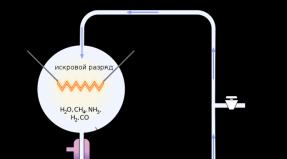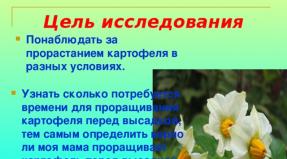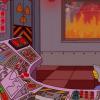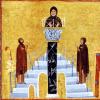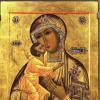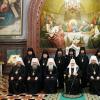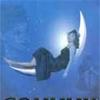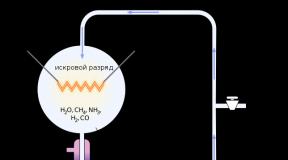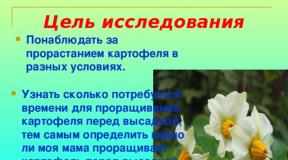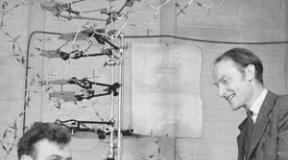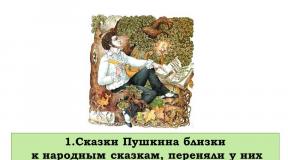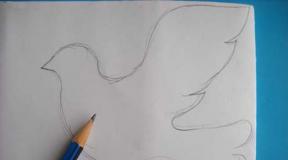How long does the service of removing the shroud last? What is the symbolism and significance of the removal of the shroud on Good Friday? Great Royal Clock
Good Friday is the most mournful day, a day of mourning. Friday is the day of remembrance of the Saving Passion of the Lord. On this day Jesus was handed over to the Jewish authorities, made a religious procession to Golgotha, was crucified and died. Read about the history and traditions of the holiday in our Questions and Answers section.
What is Good Friday?
In order for Jesus Christ to rise again, proclaiming the victory of life over death, he had to be crucified. The events took place on Friday. Jesus was tortured, then tried, then taken to Golgotha and crucified. After this, the body was taken down from the cross and buried in a cave.
The crucifix is an important symbol of Good Friday. Another important symbol that is given attention during the morning and evening services is the shroud. A long cloth with a full-length depiction of Jesus Christ in the tomb.
On Good Friday, clergy wear their darkest vestments and perform three services. In the morning, the so-called “Hours” are served in churches, after which the Gospel of the Passion of Christ is read again. In the middle of the day there is Vespers with the rite of removing the shroud, and in the evening they serve Matins of Great Saturday with the rite of burial of the shroud. Don’t be surprised by the discrepancy in time, the fact is that according to the church calendar, the day begins in the evening.
The shroud is placed on a raised platform in the center of the temple, the Gospel is placed on it, and a censer with incense is placed in front of it, constantly burning incense. Also, in memory of how the myrrh-bearing women brought oils to anoint the body of Christ, the shroud is anointed with incense and decorated with flowers. Believers venerate it, and they are also supposed to bow to the ground in front of the shroud.
All services of Good Friday and Holy Saturday begin and end not at the altar, but in front of the shroud. In addition, Good Friday is a day of strict fasting. Believers should not eat anything until the end of the rite of removing the shroud - until three o'clock in the afternoon. Then you are allowed to eat bread and drink water.
What is the service like on Good Friday?
On Good Friday, three services are held in the Orthodox Church. In the morning, the Hours are served, during which the Gospel of the Passion of Christ is read again, in the middle of the day they perform Vespers with the rite of removing the shroud, and in the evening - Matins of Great Saturday (the day according to the church calendar begins in the evening) with the rite of burial of the shroud.
During the day, at the ceremony of removing the shroud, the canon “Lamentation of the Mother of God” is read. The evening service is of a funeral nature. This is the burial of Christ Himself. Like at a funeral service, everyone in the church stands with lit candles. At the beginning of Matins, the seventeenth kathisma is read - part of the Psalter, which is usually read during funeral services for the dead or at memorial services. Then the canon of Holy Saturday is read. This is also a lament for the buried Christ, but a new theme is increasingly heard in it - the expectation of the Resurrection, the anticipation of Easter. Matins of Holy Saturday ends with a quiet religious procession with the shroud and candles. When the procession goes around the temple, everyone sings the funeral song “Holy God, Holy Mighty, Holy Immortal, have mercy on us...” Only a few hours separate this procession from the next one, which takes place on Sunday midnight, already Easter.
On Good Friday it is considered a sin to work in the garden - you cannot stick iron objects into the ground: rakes, pitchforks, shovels. Only parsley can produce a good harvest. Parsley is called the herb of fortune tellers and brings fertility, love and passion.
If you make a sachet with parsley leaves, this will be a good protection for you from physiological or psychological pressure. This day is also considered favorable for grafting trees.
And laundry washed on Good Friday will not be clean; it may become covered with bloody stains. It is not recommended to transport bees on Good Friday, otherwise they will all die. If you consecrate rings in the temple on this day, they can protect you from illnesses for the whole year. Baking on Good Friday, preserved throughout the year, cures whooping cough.
Related materials

What folk signs exist on Good Friday?
On Easter days, they do not take salt to prevent their hands from sweating; girls stand on an ax to become strong. All love signs on Easter come true especially true. If a girl hurts her elbow, then her boyfriend remembers her. If you find a fly or cockroach in the soup, wait for a date. If your lip itches, you can’t avoid kissing, if you have an eyebrow, bow to the girl with your sweetheart.

If it is cloudy on Good Friday, then the bread will be covered with weeds. If it is sunny, the wheat will be grainy.
A simple way to identify “spoiled” things in an apartment. So, on Good Friday you go to church and take the half-burnt candle that was in your hands during the service. In the apartment you light it and go through the rooms. Where it crackles, there is a damaged item.
Cutting your nails on Good Friday helps relieve toothache. In a dream on this day, the future groom will appear to the girl.
The removal of the shroud on Good Friday takes place at the third hour of the day, at the hour of the death of Jesus Christ on the cross.
Good Friday, also called Great Friday, is the most mournful day of the whole year (in 2019 it falls on April 26). It was on this day that the crucifixion of the Savior of mankind, Jesus Christ, took place. On this day, until the Shroud is taken out of the altar, all Christian believers are forbidden to have fun, as well as eat and wash. After the Shroud is laid in the temple, fasting people are allowed to drink water and bread in small quantities.
What is Good Friday? This is a worship service in a special order. All churches recount the tragic events and passions that the Savior experienced on that day. Priests all over the world read the Gospel narratives, which are read three times:
- at morning
- on the Great Clock,
- at Great Vespers.
On Good Friday 2019 (April 26), as in other years, believers around the world pray for the forgiveness of the Lord, thank Jesus for his feat, with which he atoned for the many sins of mankind, and mourn that the human soul can be so dark that once allowed the brightest to die.
Matins
The worship service, which took place in Jerusalem in ancient times, lasted all night. Starting on Thursday and ending on Friday. That night, all the believers, led by the bishop, visited the places where the tragic acts of that time took place. This is the arrest, the Last Judgment, death on the cross and burial of Jesus Christ. Each of the above places has its own passage of the Gospel. The order of reading the Gospel passages has been preserved to this day.
At the beginning of Matins, funeral troparia are sung, the 19th and 20th psalms are read, then the reading of the sixth psalm begins.
In between readings of the Gospel, the servants sing stichera and antiphons, which indicate the ungrateful act of Judas, which doomed the Savior to death.
Great Clock (Royal Clock)
The service on Great Friday is different in that the liturgy is not read. The days on which the great holiday of the Annunciation falls are subject to an exception to this rule. The reading of the Royal Hours is characterized by one feature: the 1st, 3rd, 6th and 9th hours are combined, in each of which the reading of the proverb, the Apostle and the Gospel is carried out. The narratives written by each of the four evangelists are read separately. A similar service is also held on Christmas Eves of the Nativity of Christ and Epiphany. It has become customary to call it a royal clock since the time of the Moscow tsars, since their participation in the service was mandatory.
Great Vespers (removal of the Shroud)
The Shroud is the most important part of the entire divine service performed on the Great Friday of Holy Week.
Great Vespers and the removal of the Shroud on Good Friday take place at 2-3 p.m. This action completes the cycle of services for this day. It is this time that is considered to be the time of the Savior’s death. By this hour the Shroud is taken to the temple. Removal is carried out through the Royal Doors. Before lifting the Shroud from the throne, the clergyman is obliged to bow to the ground three times. Then, in the presence of a deacon with a candle and censer, as well as priests, the Shroud is carried into the temple through the northern gate. A special place on a hill is prepared for her, which may be called a “coffin.” It is decorated with various flowers as a sign of sorrow for Jesus Christ, and the place is also anointed with incense. The Gospel is placed in the center of the Shroud.
After Great Vespers, Little Compline is held. Hymns are sung about the lamentation of the Most Holy Theotokos, as well as a canon about the crucifixion of Jesus Christ. After this, everyone can venerate the Shroud. The shroud lies in the center of the temple for three days (incomplete), thereby reminding believers of the presence of Jesus Christ in the tomb.
At the end of Matins on Holy Saturday, a religious procession is held around the temple. He passes with candles and the Shroud.
What is the Shroud and why is it so important?
The Shroud is a linen that was used as a shroud; Jesus Christ was laid and wrapped in it after he was taken down from the cross. Nowadays, the Shroud is usually called the image of Jesus Christ lying in the tomb. It is used to worship parishioners on Good Friday. The shroud remains in the temple for three days until Easter midnight, after which it is brought back to the altar.
Usually the Shroud is made of velvet, its size is approximately human height.
Traditions of taking out the Shroud on Good Friday
During the evening procession around the temple, the Shroud is carried in the hands of clergy or senior parishioners, holding it by the four corners. The religious procession is always accompanied by the ringing of funeral bells. In some churches, before bringing the Shroud and laying it on a special dais, the clergy, carrying the shrine in their hands, stop in front of the entrance and raise it high above their heads. Thus allowing the believers walking behind to enter the temple under the shrine.
The Holy Shroud has miraculous effects. It is believed that applying to it helps believers recover from many diseases.
On Good Friday 2019, people all over the world bow before the Shroud with special reverence. She is a vital symbol of what Jesus did for humanity. According to church interpretations, his heroic torment and death were able to open for us the entrance to paradise, which was closed after the sin of the first people, and also give hope for a meeting with the Lord after death.
On the day of great sorrow and sorrow on Good Friday, almost nothing can be done. But the shroud is brought to the center of the temple and every Christian believer must try to be in time for this event or at least come to the church within less than three days and venerate this shrine.
An important part of Good Friday (April 26, 2019) of Lent is remembering this day in the life of Jesus Christ 2019 years ago. On this day he was tortured, condemned to death, a crown of thorns was put on his head and tied to a heavy cross, which he himself carried to Golgotha. There Christ was crucified and died somewhere around three o'clock in the afternoon, modern time. It is at this time that the removal of the shroud on Good Friday takes place in churches all over the world every year.

If we consider the entire Orthodox church calendar, it is impossible to find a more mournful day there. It is Good Friday that is the day when Jesus Christ was crucified; only in the evening he was taken down from the cross, his body was washed and he was buried in a cave. The removal of the shroud occurs precisely as a symbol of the linen in which the body of Christ was wrapped after the cross. This canvas depicts the Savior crucified to his full height.
Read also interesting materials on the topic:
Important! Until the shroud is brought to the center of the temple, on this day you should try to observe the strictest fast possible. Until this moment, you cannot even drink water in temples and monasteries. In general, on this day you should try to fast as much as possible, even if you did not observe Lent.

The shroud is located in the center of the temple, where special services take place. Their text recalls the tragic events and everything that Jesus Christ had to experience on this day just over two thousand years ago. Moreover, the Gospel in this part is read both in the morning and during the Great Hours and at the evening service.
Be sure to go to the temple, even if you don’t get to see the exact moment of the removal of the shroud, then pray for forgiveness from the Lord Jesus Christ. On this day, in their prayers, Christian believers also give thanks for the atonement of human sins. And one cannot help but grieve that many centuries ago people had such a dark soul that they did not see the Savior on earth and crucified him. What would happen today if Christ appeared on our streets? How would we behave, would we believe in a miracle?

Matins on Good Friday
The service began on Maundy Thursday and will end on Friday morning. They remember the arrest of Christ in the garden of Jerusalem, death on the cross and burial. Particular attention is paid to all the places where these events took place.
The funeral troparions are read. The Gospel reading is interrupted by stichera and antiphons sung by the choir. They talk about the betrayal of Judas, one of Christ’s disciples - it was he who sold the Savior for money, for some thirty pieces of silver.
Great Royal Clock
This is a mournful and mourning day, so no liturgy is held (the only exception is when the Feast of the Annunciation falls on Good Friday, but in 2018 this holiday falls on Holy Saturday).
Interesting! The same service is read on Christmas Eve before Christmas and on the day of Epiphany. It received the name “royal” back in the days of the Moscow tsars, who were required to participate in these three services throughout the year.
Vespers and removal of the shroud
It is during this service that the shroud is taken out on Good Friday, at what time exactly - about three o'clock in the afternoon. It’s better to come to the temple in advance, at least at two o’clock in the afternoon, if you don’t want to miss this moment.
 Shroud of Turin
Shroud of Turin The cycle of Good Friday services ends with the removal of the shroud to the center of the temple. Before lifting her to the throne and leaving her there, the priest and congregation bow to the ground three times. Then the Shroud is consecrated, taken out through the northern gate and placed on a special place called the “coffin”. As a sign of grief, this place is already decorated with flowers and incense. The Gospel is placed in the center on this cloth at the end of the removal ritual.
So the Great Vespers Service is over, and after it, Little Compline is still held, during which they sing about the sorrow of the Mother of God, as well as about the crucifixion of Jesus Christ once again. If you find yourself in the temple at the time of the removal of the shroud in 2018, do not miss the opportunity to venerate it. The Shroud will remain in the temple for three days until the onset of Easter (the procession around the temple on the evening of Holy Saturday), when the Savior has already risen from the tomb and resurrected.
Why is the Shroud so important?
In this material we have already written that the shroud in every temple on this day is the personification of the shroud in which the body of Jesus was laid and wrapped after he was taken down from the cross. That is, the shrouds in churches today are an ordinary modern canvas (most often velvet), but without fail with a full-length image of the crucified Christ.

The priest and his assistants bring out the shroud, holding the cloth by the four corners. Then there is a religious procession, which is accompanied by bells. In some churches, the tradition has been preserved after the religious procession, even before the shroud is brought into the temple and laid in the center, the clergy lift the cloth up and the believers can walk under it.
We turned our gaze to God.
We decided to live like a Christian.
They took the children to temples,
So that you can find grace there.
We decided to teach literacy:
What to do without Orthodoxy?
Fortunately, the news spread -
A school has been created at the temple!
At first there were few of us -
Just one classroom.
While the kids were working in it,
The parents became friends with each other.
And the younger ones were brought to school.
How quickly they all grew!
We tried to imitate our elders:
Find out more good things.
We lived very amicably at school.
They drank tea in the kitchen and joked.
We celebrated all holidays together.
We communicated without any flattery.
More and more children came.
And the old building was cramped.
To make the school accessible,
The priest did a lot of work!
And with his good efforts
A building was built for the school:
More classes, a hall with a stage,
The dining room is extraordinary.
The school became like a home to us.
We had enough worries for everyone:
Concerts, fairy tales, performances...
Everyone joined in without embarrassment.
We learned a lot on our trips,
They almost became pilgrims.
Parents found something to do:
Who sang, who sewed dresses for fairy tales.
There are more things to do
More and more children studied here.
And in the summer we vacationed together.
We called our vacation a camp.
And in the music department:
Playing the piano, singing,
Solfeggio and the choir sings,
Exams twice a year.
Irina teaches patiently,
Smiling nicely with everyone.
English Allochka leads,
Elena invites you to draw.
There is also beadwork,
Choreography training,
We took a cooking class.
What they didn’t teach here!!!
We even sang in the choir.
She taught us in a difficult matter
Galina, God's servant.
(Almost drove her crazy!)
Everyone cleaned the school together.
The children were taught to be orderly.
Ilona is our groovy
She worked tirelessly.
“There are no limits to creativity! —
Her answer is always ready. —
Who loves sports, who loves to draw,
And I love to play with children!”
George, our glorious father,
In everything, the mentor is the most important.
He is tolerant and kind to everyone.
We bow to him!
May God continue to prosper you!
Teach children to grow up without falsehood.
Health, help from heaven!
After all, Christ is Risen for people!!!
… It was a long time ago. Once, at the playground in the village of Kuznechiki, I heard from mothers about good preparation for school in the early childhood development group. I really wanted to include my son in this group, and my husband and I met with Ilona Stanislavovna and began to ask her to take us. She warned that she would continue to work at the Sunday school at the Church of the Assumption of the Blessed Virgin Mary in Shchapovo. “Where you go, we go,” was our answer.
I must say that at that time our family was far from the faith. Blessing eggs and Easter cakes for Easter - that’s all going to Church. But new times have begun. Everything was new in Sunday School classes. We wrote down the words of the prayer in a notebook and taught it to our son together. And how difficult it was to stand in the church for “the whole” 40 minutes before communion! After all, we didn’t even arrive at the start of the service.
The old Sunday School building comes to mind. How we fit in there, how we managed to spend holidays in a small room-classroom! But everything was done with such love, such sincerity that I wanted to come there again and again.
We are still on excellent terms with all the mothers, we support each other, we consult on many issues. And our teacher, Ilona Stanislavovna, is the sunshine of Sunday School. She taught and teaches our children kindness, understanding, mutual assistance, and love. And she answers all our, adults, questions, finds an approach to everyone.
Rehearsals for our holidays are a separate creative process. After all, preparing a holiday script, thinking through all the subtleties is only part of a huge iceberg, all the complexity is hidden from the eyes of the audience: gather all the participants, motivate adults to participate in the performance, make costumes, come up with fun games, nursery rhymes, and so on. And at the same time, so that the kids don’t get tired, so that it’s great...
So, gradually, together with my eldest son, we came to the temple. When he was seven years old, we prepared together for confession. Now three of my children are studying in Sunday school, the eldest has already participated in the service - reading and singing with the choir. Now more teachers work with our children. Sunday school has become a part of our life.
I would like to sincerely thank Father George for making this training available to everyone. And a huge bow of gratitude to Ilona Stanislavovna for her truly titanic work. May God grant them good health and many happy summers!
This is the tenth year that I have been going to our Assumption Church... The first time I appeared in it, as they say, in company with my cousin. Then, throughout the entire service (it seemed endless), I, exhausted, thought only about when it would end. And when I left the temple, I didn’t feel anything in myself. I decided that it was not time yet, that I would come again when my soul truly demanded it.
Years passed, I became a mother. We baptized our firstborn only when he was three years old. And there was no understanding of why this was needed - everyone is baptizing, and so are we. Our eldest son was in his fourth year when our daughter was born. By God's providence, and I cannot explain it any other way, I learned from a new friend about the Sunday school at our Church of the Assumption of the Blessed Virgin Mary. I thought this was very helpful. The child will get ready for school, because I had absolutely no time for him - my daughter was very capricious, I had to be with her all the time. Meanwhile, the son was walking in the yard with his older friends and, as a result, began to swear...
I remember coming to ask how I could enroll in school. There was no one on the temple grounds. And then Mother Maria comes out (now deceased - the Kingdom of Heaven to her!), so calm, good-natured, and says: “You come at the end of summer, Ilona Stanislavovna will take the child, she will definitely take it, she takes everyone.”
Since September 2006, a new life began for me. So imperceptibly, somehow naturally, I began to visit the temple with my children. At first she gave communion only to children. This is how it was customary: on the twelve holidays, children from Sunday School went to communion. And then she began to take communion herself. This is a completely different state of mind. It’s wonderful when you feel the need and when you have the opportunity to come to church!
Over time, Sunday School became our second home, and we all became one big family for each other. It is very important to understand that in any, even the most difficult life situation, there is someone to rely on. I also discovered my acting abilities. After all, at school we prepare performances for children. When you are tired of the endless worries of everyday life, you come to a rehearsal, you see your already so close people there, then you are distracted, come back to normal and feel that everything is in order. And at the celebration after the performance - the joyful faces of the children and the kindest, happy face of our Father George.
Now I have four children, I live in a different place, I go to another church, but whenever possible I go with my children to Shchapovo, to the Church of the Assumption of the Blessed Virgin Mary, which became for me the beginning of a new, spiritual, bright life, my salvation and spiritual joy.
With all my heart I wish our parish and Father George, our kind and patient mentor, many and prosperous years.
... Exactly ten years ago, a recruitment of children was announced at the Klenovsky House of Culture to prepare them for school. One of the initiators was a teacher from Shchapovo - Ilona Stanislavovna Simakova. Unfortunately, the group was not full, but I firmly decided that I would take my five-year-old son Misha to classes at the Shchapovsky Palace of Culture.
At the first parent meeting, Ilona Stanislavovna announced that classes with children would be held at the Sunday School at the Assumption Church, where, along with the basic subjects, she would introduce our kids to the Law of God and the fundamentals of the Orthodox faith. As far as I remember, my parents were not embarrassed by this, and they even made me happy. At that time I myself was not only an unchurched person, but, to put it mildly, “complete darkness.” So I thought that at least someone would tell me and introduce my child to “this science.”
I’ll say right away: my son simply fell in love with Ilona Stanislavovna. He said that she was like a mother - kind and attentive. I always looked forward to the day of classes and happily got ready to go. In those days, we had a tiny class in a one-story building at the temple. But what’s surprising is that they managed to hold classes, rehearsals, and performances there! Now, after so many years, looking through old photographs, I never cease to wonder: how was this possible?..
At Sunday school we lived as one big and friendly family, all parents were involved in this life: someone cooked food, someone sewed suits, someone cleaned and washed dishes, someone photocopied educational materials, someone made agreements. about pilgrimage trips. And most importantly, we were all, as they say, “in the spirit of God” - everything was done with prayer and the word of the Lord. We all understood that our salvation in the midst of an all-consuming world was only here, at the temple.
I slowly became a church member. Like a small child, she “learned to walk.” I literally felt an information hunger that urgently needed to be satisfied. I started reading Orthodox literature. The Lord sent me believers who could answer my questions, I listened to lectures, visited holy places. If earlier I associated the word “father” with the fairy tale “The Scarlet Flower,” now I tried to take my father’s blessing to start any important business. I acquired not only knowledge. My life completely changed. Truly, the Lord makes children for himself from stones...
My boy grew up, shared what he learned at school, and retold interesting stories from the Old and New Testaments. I studied with him. Two years flew by unnoticed, the question arose - where to go to study. We wrote an application to Podolsk Lyceum No. 26 and were waiting for an invitation for testing. At the same time, I asked Ilona Stanislavovna if she knew a good, “strong” school. She replied that there is such a school in Pleskovo, plus it’s Orthodox. However, it is very difficult to enter there - a serious competitive selection among children, a conversation with parents.
For our bilingual family, where dad is Muslim, this will be very difficult. Father blessed us, because nothing is impossible for God, and we decided to try to enroll there too. I don’t want to be verbose, I’ll just say that after the first round the teachers told me that the boy had good preparation. As a result, he was admitted to Plyoskovo, and passed the test well at the Podolsk Lyceum. Of course, we did not choose and with great joy accepted the gift from the Lord.
I want to say one more thing. Before coming to Sunday school (I believe that I, like my son, came there) I was a staunch supporter of one child in the family, who should be given a decent education and upbringing. In general, my head was filled with the standard selfish thoughts of a person raised as a pioneer and a Komsomol member - and this despite the fact that I myself grew up in a large family.
Only here, in Sunday school, did I see with my own eyes the joy of large families and understood the true value of family and the purpose of a mother. In 2008, at the age of 33, my second son was born. Exactly a year later, Ilona Stanislavovna’s third daughter was born. Our children were born on the same day – May 20th.
Misha, the eldest, now attended Sunday school not twice a day, like a preschooler, but on Saturdays, still in the same small classroom in the old building. And only in 2009, with the help of God, a new two-story building was restored: the space and beauty were breathtaking! Our large family grew every year, and now the children were not crowded. I started bringing my youngest son, Matvey, to school from the age of three. He walked the same road as the eldest. Those parents whose first-born children attended Sunday School now also brought their second and third children. And now the time has come for graduation from the preschool department, ahead of which is admission to a comprehensive school. We are trying, with the blessing of the priest, again to Pleskovo. Not as easy as in the case of Misha, but they did it! Wonderful are Your deeds, O Lord, and great and sincere gratitude to my husband. Unfortunately, he did not become a Christian, but throughout the 22 years of our marriage he has been my like-minded person, a wonderful husband and father.
Ten years have already passed, and other parents and I still remember how it all began for us then, what we, our children, were like... When we get together, the phrases are heard every now and then: “do you remember how we watched the play, standing in the doorway?..”, “do you remember how small and cozy our refectory was?..”, “do you remember how mine said in class that a defeated demon turns into a dirty, stinking puddle?..”, “do you remember , how did a television crew come and make a film about the measured icon with the participation of our children?..” Such endless “do you remember” will be enough for us for the rest of our lives, because they became the powerful foundation on which our churching took place.
My life was divided into two halves: before coming to Shchapovo and after. Now, by the will of God, I teach children the basics of the Orthodox faith at the Klenovskaya Sunday School and attend the folk choir classes at the church, sometimes the priest blesses us to sing at the liturgy and evening service. Outside the church, without prayer, I cannot imagine my life and endlessly praise and glorify the Lord for the fact that ten years ago he opened the road to salvation for me and my family, the starting point of which was the Shchapov Sunday School and a wonderful, sympathetic and sincere person - Ilona Stanislavovna.
Marina Kholmurodova, Klenovo
Good Friday, which falls on April 17 in 2020, is a day of suffering and sorrow. The services that take place in Orthodox churches are entirely devoted to the memory of the tragic events that occurred about two thousand years ago.
To emphasize the peculiarity of this day, liturgy is not served in churches: it is believed that it has already been performed by Christ on the Cross. Instead, the Royal Hours are performed - in the church in front of the Cross, psalms and Gospels about the passion of Christ are read.
In churches three times - at Matins, at the Great Hours and at Great Vespers - the story of the life and death of Jesus is read. At Good Friday services, clergy wear black vestments.
Removal of the Shroud on Good Friday of Holy Week
At Vespers, which begins earlier than usual on this day, the canon “On the Crucifixion of the Lord” is sung, then on Good Friday follows the removal of the shroud through the Royal Doors. Before lifting the shroud from the throne, the clergyman bows to the ground three times. This ritual is performed at the third hour of the day, at the hour of the death of Jesus Christ on the cross.
The Shroud is a cloth (piece of fabric) on which a full-length depiction of Jesus Christ lies in the tomb.
The Most Holy Theotokos is also depicted falling at the tomb, standing next to Her are John the Theologian, the myrrh-bearing women and the secret disciples of Christ - Nicodemus and Joseph of Arimathea.
Along the edges of the shroud the text of the troparion of Great Saturday is embroidered or written: “The noble Joseph took down your most pure body from the tree, wrapped it in a clean shroud and covered it with fragrances in a new tomb, and laid it.”
The shroud is placed on a special elevation in the center of the temple. The “coffin” is decorated with flowers as a sign of sorrow for Jesus Christ and the place is anointed with incense. The Gospel is placed in the center of the shroud.
The shroud in this service is assigned a role that in other cases is performed by the icon of the holiday. The removal of the shroud on Good Friday completes the cycle of services for that day.
On Friday evening, Matins is celebrated, which already refers to the day of Holy Saturday. At the church service, funeral troparia are sung and incense is performed.
Then a procession of the cross takes place around the temple with the shroud, which is carried by the clergy or senior parishioners to the four corners. Believers sing “Holy God.”
The removal of the shroud is accompanied by the ringing of funeral bells. At the end of the burial ceremony, she is brought to the Royal Doors, and then returned to her place in the middle of the temple.
On Good Friday, before the removal of the shroud, believers observe strict fasting, completely abstaining from food. After this, drinking water and bread in small quantities is allowed.
After the ritual of removing the shroud, at the end of Great Vespers, Little Compline is held. Then believers can venerate the shroud.
This shrine is considered miraculous: there is a belief that if you venerate it, you can be cured of many diseases. She remains lying in the center of the temple for three incomplete days (until Easter). Then she is brought back into the altar.
